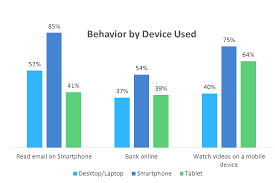Mobile Compatibility: Are you listening to your respondents?
January 30, 2015Generation Why?
July 23, 2015Excluding mobile devices has an impact on study demographics: mobile respondents are more likely to be younger and non-white. Perhaps more importantly, excluding mobile respondents eliminates those that have different behaviors than their desktop/laptop counterparts.
Eliminating smart phones from surveys can eliminate respondents that are much more active online than those who take surveys on tablets or desktops/laptops.

They also differ from a panel profile standpoint. Smartphone survey takers are less likely to be on multiple survey panels, they’re newer to their current panel, and they take less surveys. Related to this, they tend to rate concepts higher and brands higher than those that take surveys on a laptop/desktop.

Including mobile devices does come with its challenges. Common challenges include reducing survey length, keeping grids to a minimum, and ensuring content that can be easily viewed on a smaller screen. In addition, mobile respondents are less willing to do “extracurricular” research tasks such as participate in a focus group or a product test, and they are more likely to drop out of a survey prior to completion if the survey is too long.
Even with these challenges, we strongly recommend that all surveys are programmed to be device agnostic. By doing so, you will increase feasibility and create a more representative blend of respondents for your research.

